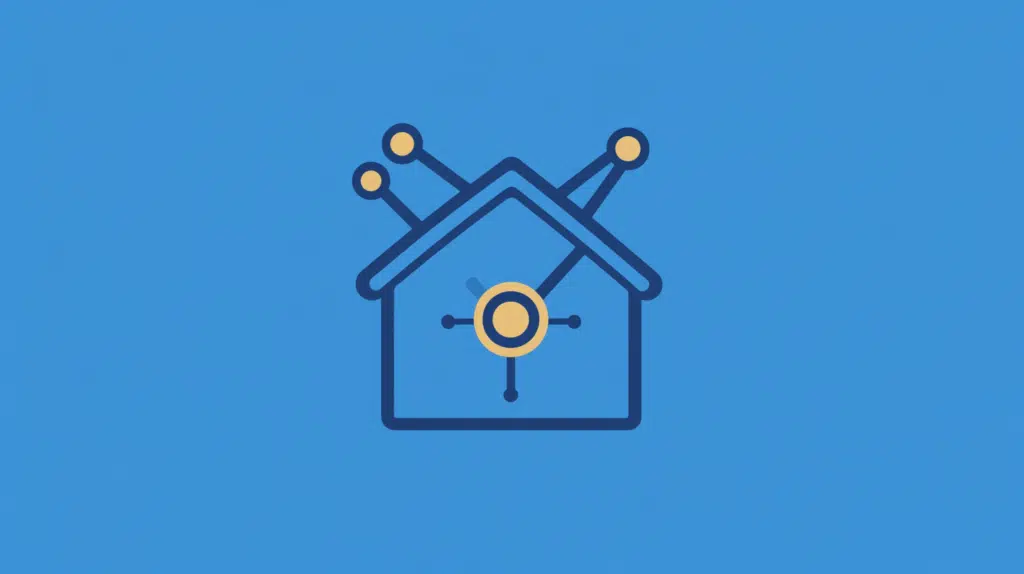Last Updated on November 19, 2024
Need ideas for your intranet homepage?
In this guide, I will explain how you can create a successful intranet homepage in SharePoint Online and the features you can include.
Let’s get started.
Table of Contents:
What is the purpose of the intranet homepage?
Thinking about what to include on the intranet homepage can be a little confusing.
This is why you need to step back and think about the purpose of the intranet homepage, specifically, for your organization.
For starters, there are three general purposes of an intranet homepage:
- To share information and communicate with others
- To help employees and teams collaborate
- To connect employees, teams, and the leadership
There could be other purposes, but these three form the basis of why we create intranets.
Once you nailed your purpose, you can start figuring out the apps and tools you can include on your homepage.
👉 Related: SharePoint Intranet Homepage Examples (Free Templates)
Sign up for exclusive updates, tips, and strategies
What are the benefits of an intranet homepage?
Today, the business of creating an intranet homepage is becoming increasingly competitive and complicated.
It’s a far cry from the past when organizations purposely avoided them because of how difficult and boring intranets seem to be.
But now, organizations use intranets regularly as a place to find information about the company, share ideas, etc.
Here are specific benefits that you can get from an intranet homepage:
- Internal communications: It’s a secure place where teams can communicate with each other in real-time
- Company culture: Intranets help spread beliefs and culture throughout the company through communication and transparency.
- Employee engagement: It can help employees engage with each other wherever they are in the world.
- Information and activity: Employees can quickly check the homepage for up-to-date information and upcoming events.
- Knowledge base: Intranets can serve as a database of all relevant knowledge that employees may need to check from time to time.
- Collaboration: Apps can integrate with the homepage so employees can work together on the same projects.
The good news is that they can be done in SharePoint — even using only the out-of-the-box features and web parts.
I will link out relevant articles in case you want to learn more about how to use those web parts or install the features on your intranet.
What elements to include in the intranet homepage
When building an intranet homepage in SharePoint, you can include various elements on the page in the form of web parts.
I will enumerate and explain what elements to include below. But remember that you don’t need to include them all.
1. Information and knowledge dissemination
Naturally, you will need a way to share information and knowledge with the site’s visitors.
For example, you can post:
- Company news
- Relevant articles
- Knowledge base pages
For news and pages, you can use the news web part:

You can configure the source, and the layout, and add filtering options, as well as audience targeting.
For a knowledge base, I suggest creating another site and then sharing the pages on the homepage or through quick links.
If you need to share pages or news from outside sources, you can set up an RSS feed that doesn’t need as much effort.
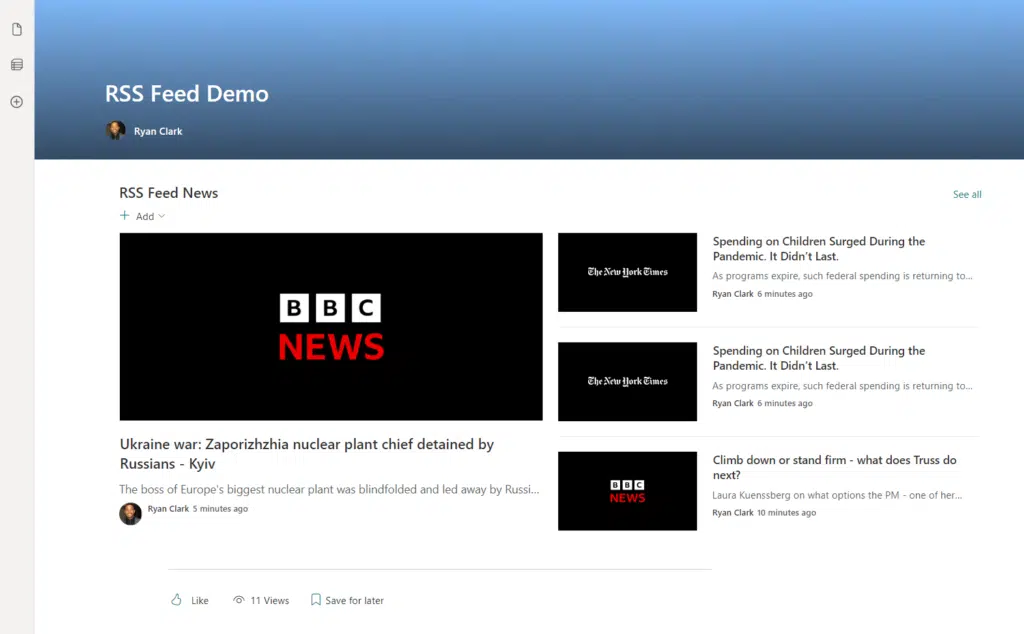
👉 Related: Modern SharePoint Web Parts: List of All Available Web Parts
2. Social media
For employee engagement and building culture, you need to set up a social media feature on the intranet homepage.
That used to be Yammer’s job, but is now replaced with Microsoft Viva Engage:

Viva Engage is an enterprise social networking platform that connects employees within an organization.
It functions similarly to internal versions of Facebook or LinkedIn to facilitate open communication among team members.
You can seamlessly integrate Viva Engage with SharePoint quite nicely as well.
The integration with SharePoint can be done with the following web parts:
- Conversations: Displays active discussions from Viva Engage
- Highlights: Provides a snapshot of the latest or most popular discussions
With these web parts, you can create a dynamic and interactive intranet experience that encourages engagement and collaboration.
👉 Related: What Is Microsoft Viva: The New Employee Experience Platform
3. Teamwork and collaboration
SharePoint is great for teamwork and collaboration where you can create a dedicated site specifically for project management.
However, there is one other way — that is through SharePoint and Teams collaboration:
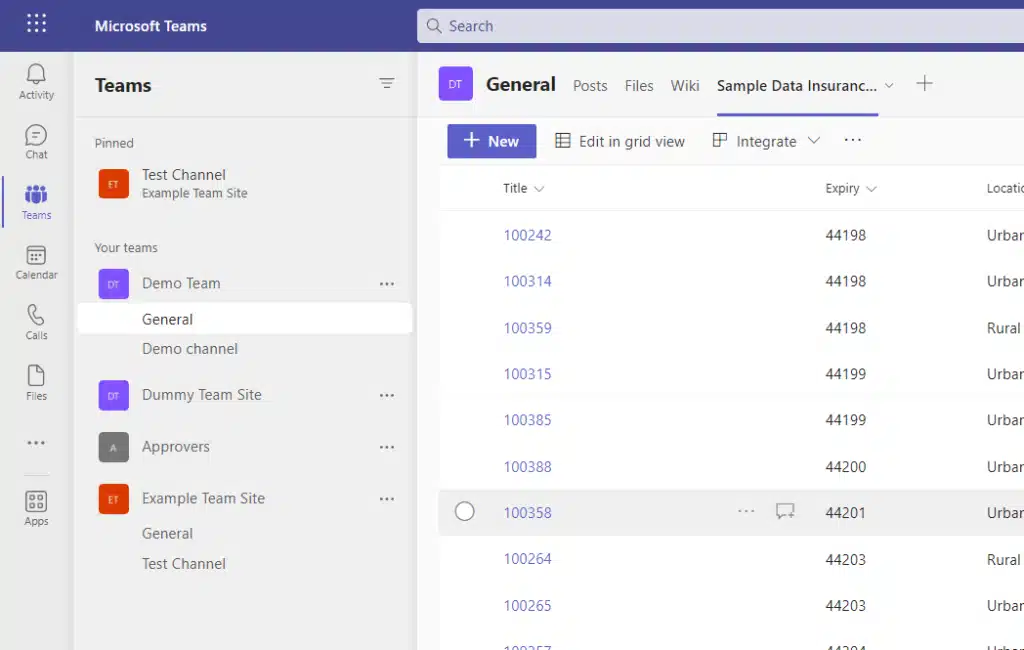
You can literally work on lists and documents from SharePoint right inside Teams itself.
When you create a team for a site, you will be able to visit the team channel from your intranet with a single button.
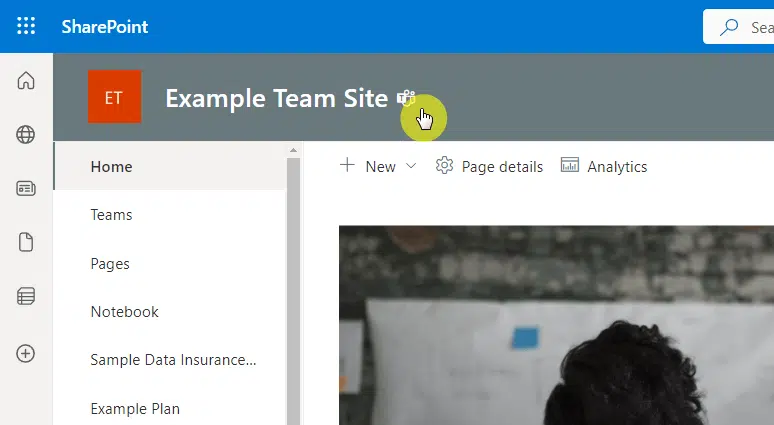
But what if you want to do the opposite — like use Teams within SharePoint?
That’s now possible with the release of SharePoint Framework v.1.7 and the recent Teams release update.
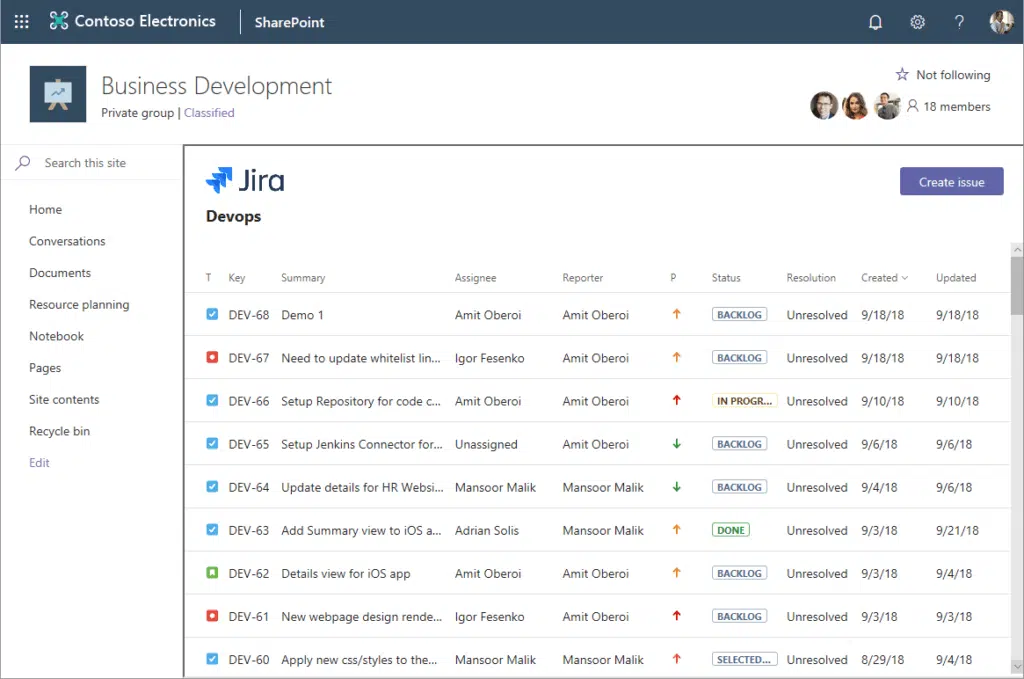
This brings the whole Teams app and the experience right into SharePoint by hosting the tabs in SharePoint.
To do this, all you have to do is upload and deploy a Teams app package to the SharePoint App Catalog.
👉 Related: Microsoft Teams Tutorial: Become a Teams Expert Quickly
Did you know that SharePoint now has a quick launch navigation feature by default?
It’s literally a menu panel that you can find at the top (communication sites) or left side (team sites) of the site.
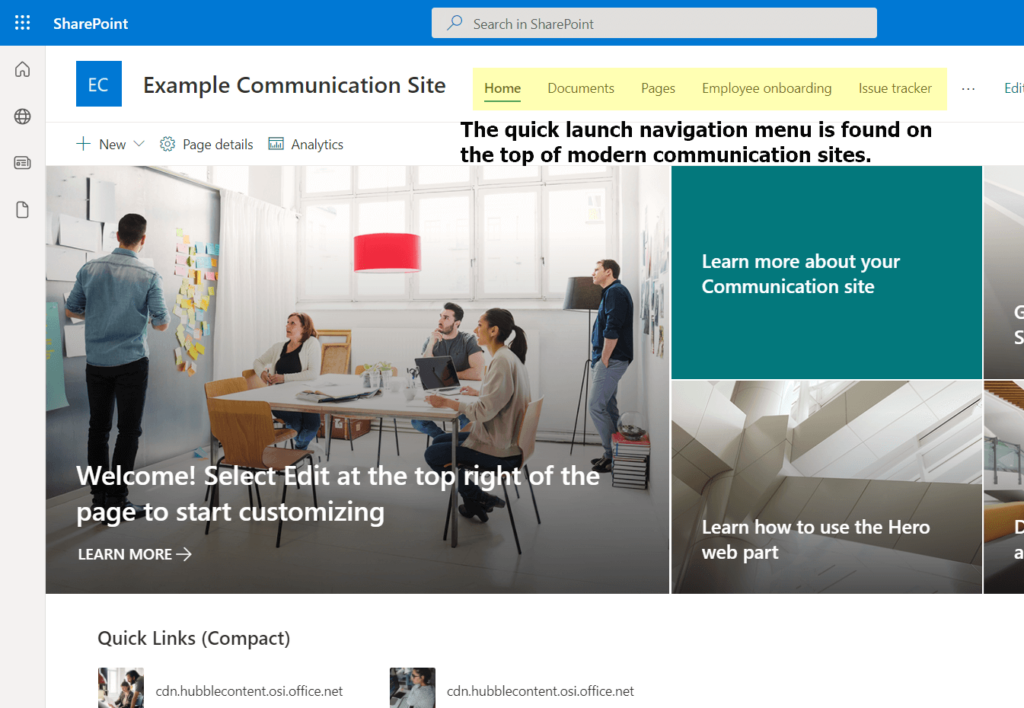
Its main purpose is to help users navigate through the entire intranet site easily.
Of course, you can customize it so that it’s easy for your employees to go through the entire site and its pages.
👉 Related: The SharePoint Online Quick Launch Navigation Menu 2022
5. Useful apps and tools
The truth is, there is just so much you can add to your intranet homepage that can make the lives of your visitors easier.
For example, if you want to create more personalized content for them, you can set up my feed web part.
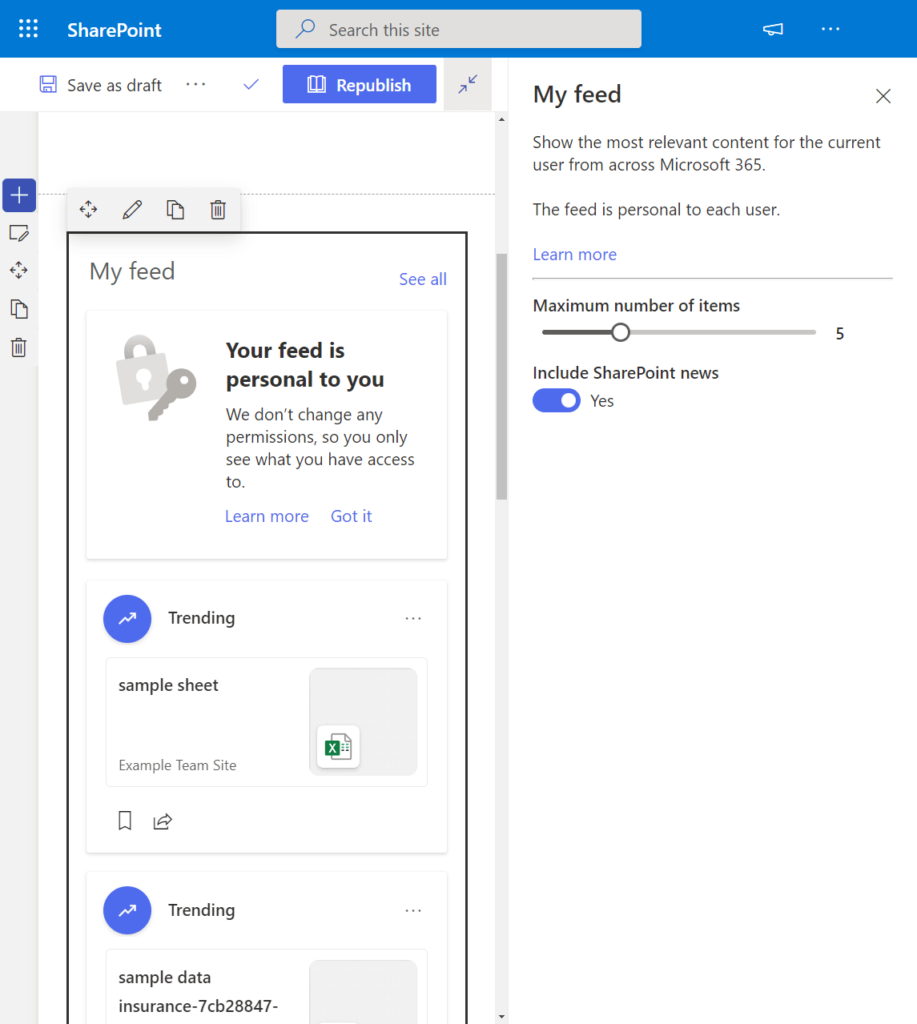
There may also be times when you want to display information to specific users.
SharePoint has an audience targeting feature as well as a highlighted content web part you can use:
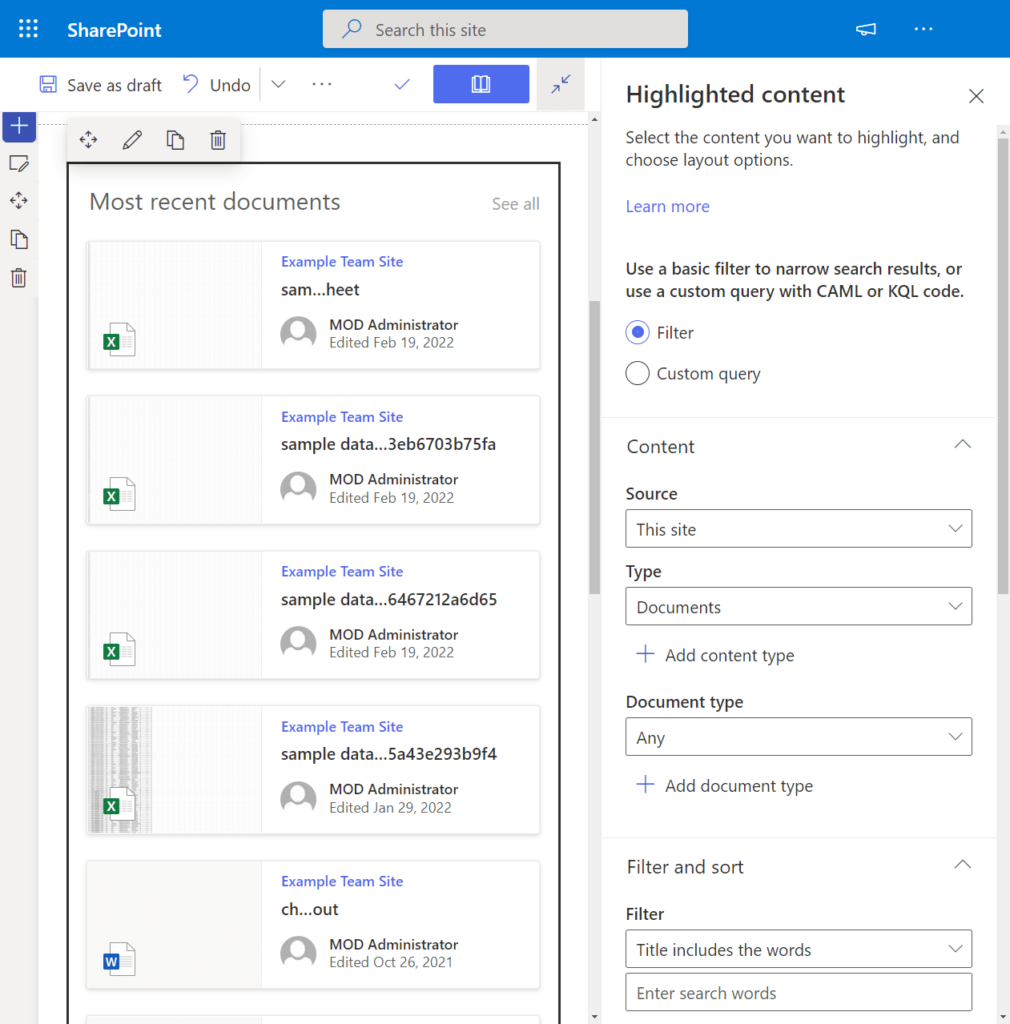
Besides these, there is a myriad of apps and tools you can install on SharePoint.
That doesn’t even count all the third-party tools out there (when doing this, make sure to strengthen your security measures).
Making a Great Intranet Homepage Design
With that, it’s time to talk about the intranet homepage design.
I won’t be talking here specifically about the looks of the homepage.
But I want to discuss the specific steps so you can come up with your own design.
Step #1: Know what your organization and employees need
The first step is to understand what your organization and employees need on your intranet homepage.
For example:
- Your employees might want to get to know the organization and its leaders better. They see the leaders as great men and women.
- Due to the nature of the work, the employees need to continually check manuals and guides.
- The organization is new and everyone wants to know each other.
For the first one, you want to add a portion on the homepage where leaders can post and share messages with the employees.
If they need manuals and guides, you can create a wiki and then make it easy for them to access it from the homepage.
If the focus is more on socialization and getting to know each other, adding social features would greatly benefit your organization.
If you can’t wrap your head around this, you could create a form or survey and pass it around in the organization.
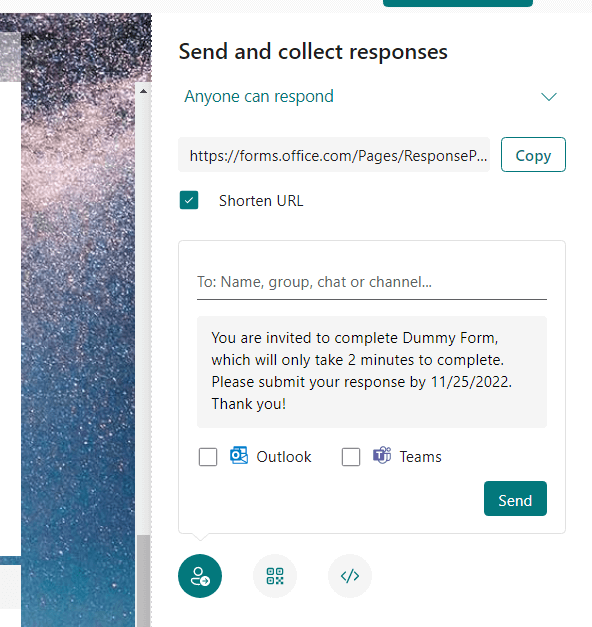
👉 Related: How to Create Microsoft Forms: The Definitive Guide
Step #2: Choose the components to use on your homepage
Now that you have a clear view of what your organization needs, it’s time to choose the components to use on the homepage.
Back to our example:
- Use the news web part and related features if you want leaders to share news and articles that employees can read.
- For building a wiki, create another site first and then add quick links or another news section that shows wiki pages.
- For social features, you can add either the conversations web part or the highlights web part to integrate Yammer with SharePoint.
At this point, you need to be careful that you won’t saturate the homepage with too many web parts and tools.
This is why step #1 is important:
It helps you focus on the components you need to meet the needs of the organization and its employees.
Step #3: Design and ask for feedback
Finished creating the homepage? Don’t release an untested page just yet.
Pass it along to a few colleagues and then ask for feedback.
For starters, you can ask them the following:
- Was the page easy to navigate and use?
- Did the homepage help fulfill the needs of the organization and its employees?
- If you could change one thing about the homepage, what would it be?
Once you have their responses, it’s time to go back to the designing stage and finalize everything.
You can do a few more tests to confirm that the intranet homepage design is in the best form possible.
But don’t beat yourself for it, you will change the homepage design regularly to meet the changing needs.
Tips on creating an intranet homepage
As you update and change your intranet homepage design over the years, you will notice that there are important things you need to be aware of.
Here are some tips and reminders for your intranet homepage:
1. Focus on key information
No matter what the goal and the needs are of your organization and its employees, one thing remains clear:
There will always be information that is more important than the others — and you need to prioritize this information.
This is important especially as you add more sections, web parts, and tools to your homepage and intranet in general.
2. Timely and accurate information
This may come as a bit obvious…
But please make sure that the information you share on the intranet homepage is accurate and timely to your organization.
Don’t share any news that isn’t proven true.
It might affect the morale of the employees and could destroy their trust in the intranet and the leaders.
If you have content creators on the intranet, remind them to always update the information they share on their posts or videos.
3. Make it easy to search
The search feature is awesome and if you know a keyword or two, you will likely find what you’re looking for.
However, this isn’t an excuse for skipping out on logical names and descriptions.
Doing so would only make it harder for the users to find certain documents and files in SharePoint since the only key left is to remember metadata.
👉 Related: How Does SharePoint Search Work: The Beginner’s Search Guide
4. Quick links
I can’t stress this enough…
But it’s important to add quick links to the most frequently visited pages and documents as well as to important pages.
There is always the quick launch navigation bar.
But you can only fit a limited number of links there before it gets messy.
5. Clean and simple
My last tip is to make your intranet homepage design as clean and simple as you possibly can.
The more you add sections and web parts, the more chaotic it could get. This can affect the user experience.
All these means is to focus on important ones — and delete those that the organization and the employees don’t need.
What are your next plans for your intranet homepage? Share your thoughts or questions in the comments.
Need professional help? Kindly drop a message using the form here and I’ll get back to you as soon as possible.

